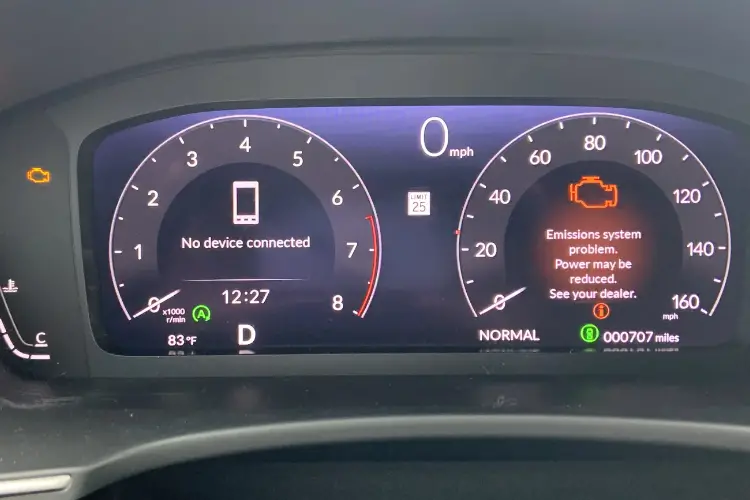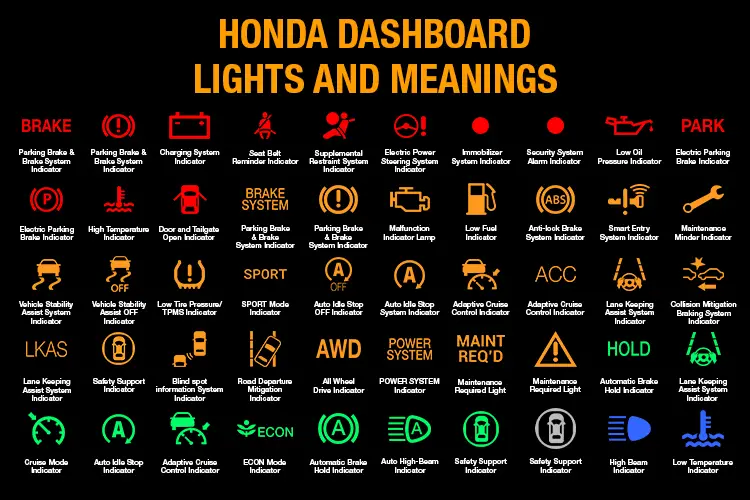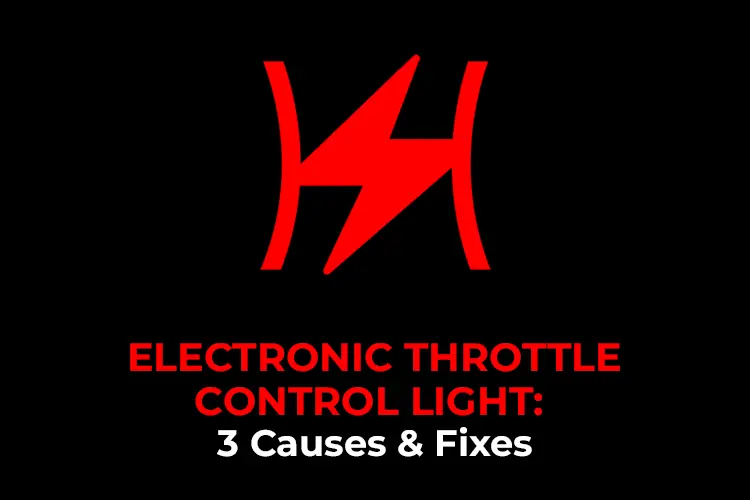Seeing the check engine light illuminates on your Honda? And you’re wondering:
- What does the light mean?
- Is it a serious problem?
- Why is it on?
- What should I do next?
Take a deep breath, because in this article, I will demystify the Honda check engine light, uncover the reasons behind its appearance and equip you with the know-how to tackle the issue head-on.
So, let’s dive in!
What Does the Check Engine Light Mean on Honda?

The check engine light (CEL), often referred to as the malfunction indicator lamp (MIL), constitutes a crucial element of modern vehicles’ On-Board Diagnostics (OBD) system. Its purpose is to monitor the performance of various components within the engine and exhaust systems.
On your Honda, the check engine light will come on if there is a problem with the emissions control systems. Additionally, it will start blinking if a misfire in the engine’s cylinders is detected.
Can I Drive My Honda with the Check Engine Light on?
No. Driving with the Honda CEL on is generally not recommended. Ignoring this light and continuing to drive could lead to potential problems and costly repairs in the long run.
When the check engine light comes on, it’s essential to take it seriously and address the underlying issue as soon as possible. The best action is to pull over to a safe location and check the gas cap (if applicable).
If the issue is not obvious or easily fixable, it’s advisable to have the car inspected by a qualified mechanic or take it to an authorized Honda service center.
Now, let’s proceed to the next part to understand precisely why the check engine light illuminates on your Honda!
Why is My Honda Check Engine Light on?
The Honda check engine light can illuminate for various reasons, ranging from minor to potentially serious problems. Some common causes include:
When the gas cap is loose or damaged, it allows fuel vapors to leak out, leading to an increase in emissions.
Solution: Check the gas cap and ensure it is tightly secured. If the cap appears damaged or worn, consider replacing it with a new one.
After tightening or replacing the gas cap, drive the car for a few miles to see if the check engine light turns off. If the issue was indeed the gas cap, the light should reset.
Solution: Replace the sensor promptly. The location of the faulty sensor depends on the specific Honda model. Consulting the vehicle’s repair manual or seeking assistance from a qualified mechanic is recommended to locate and replace the problematic sensor.
Solution: In some cases, a clogged catalytic converter may need cleaning, while severe damage may require replacement. It is essential to have the vehicle inspected and fixed by a professional mechanic.
Solution: Cleaning the MAF sensor with a specialized cleaner can sometimes resolve the issue. However, if cleaning doesn’t work, it might be necessary to replace the MAF sensor. A qualified technician can assist with diagnosis and replacement.
Solution: Inspect the spark plugs for signs of wear or damage and replace them if necessary. Similarly, faulty ignition coils should be replaced promptly. Regular maintenance, such as replacing spark plugs at recommended intervals, can help prevent these issues.
What to Do When the Honda Check Engine Light Comes on
The check engine light operates similarly across various Honda vehicles, and these actions are fundamental in responding to the check engine light regardless of the specific model you own.
These guidelines provide a universal approach to addressing the CEL, ensuring that you’re well-prepared to handle the situation, regardless of whether you’re driving a Civic, Accord, CR-V, or any other Honda model.
So don’t fret! Keep reading to uncover expert advice on exactly what to do when that light comes on.

- Check Gas Cap: As mentioned earlier, start by checking the gas cap and ensuring it is tightly secured or replacing it if necessary.
- Check Dashboard: Look for other warning lights on the dashboard and assess the overall vehicle performance.
- Use a Code Reader: Investing in an OBD-II code reader can help you retrieve diagnostic trouble codes (DTCs) associated with the check engine light. Refer to the vehicle’s manual or my OBD Code Lookup to understand what they indicate.
- Address Issues: If you’re comfortable and the issue appears minor, you can attempt to fix it yourself (e.g., reconnect a loose wire). If the issue is beyond your expertise or the light persists, schedule an appointment with a qualified mechanic.
- Erase DTCs: Once the issue is resolved, the mechanic will clear the DTCs using their equipment.
That is a brief rundown of essential tips to remember when the check engine light illuminates. For a comprehensive guide on handling the check engine light, make sure not to miss my in-depth article on Check engine light. It’s packed with valuable insights to keep you informed and in control of your vehicle’s health. Don’t wait. Dive into the full article now!
What’s Next?
The Honda check engine light may seem scary, but it’s like your car’s little helper, letting you know when something needs attention.
Promptly addressing the cause and seeking professional help when needed can ensure the vehicle’s optimal performance and reliability. Remember, staying on top of regular maintenance can prevent many check engine light surprises.
Every car light that pops up on your dashboard has a unique story to tell, not just the check engine light. So, listen to your car and take good care of it.




Recommended for you
DRL Light on Honda: Meaning and How to Respond
SRS Light on Honda: Causes and Solutions
What Does Wrench Light Mean on Honda? How to Reset it?